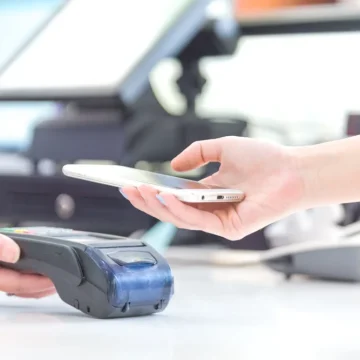In today’s digital-first economy, mobile payment systems have become a cornerstone of modern e-commerce. As online shopping continues to dominate the retail landscape, consumers are shifting toward faster, safer, and more convenient payment solutions. The rise of mobile wallets, one-click checkouts, and contactless transactions reflects a broader transformation in how people purchase goods and services online. Understanding mobile payment systems and their role in online shopping helps businesses optimize conversion rates, build trust, and enhance user experience.
Understanding Mobile Payment Systems
Mobile payment systems are digital platforms that enable users to make purchases or transfer money using mobile devices such as smartphones, tablets, or wearables. These systems leverage secure technologies like tokenization, biometric authentication, and encryption to protect financial data during transactions.
Common types of mobile payment systems include:
- Mobile Wallets such as Apple Pay, Google Pay, and Samsung Pay.
- Bank Apps that allow direct payments or transfers.
- Buy Now Pay Later (BNPL) solutions that offer installment-based purchasing.
- Payment Gateways integrated with mobile commerce platforms.
These systems are built on the principles of convenience, speed, and security, which are vital in today’s fast-moving e-commerce environment.
Growth of Mobile Payments in the U.S. Market
Recent industry statistics reveal that nearly 44% of U.S. e-commerce sales occur on mobile devices, representing over $560 billion in 2024. This number continues to rise as younger generations increasingly rely on smartphones for both browsing and checkout.
Moreover, Apple Pay and Google Pay are among the most dominant platforms, collectively serving tens of millions of active users. Apple Pay alone has an estimated 60 million users in the U.S., reflecting strong consumer confidence in contactless and mobile-first payment experiences.
Why Consumers Prefer Mobile Payment Systems
The increasing popularity of mobile payments in online shopping is driven by several compelling factors.
1. Convenience and Speed
Mobile wallets allow users to complete transactions in just a few taps without needing to enter card details manually. This convenience eliminates friction during checkout—a key factor since 70% of shoppers abandon carts due to complicated checkout processes.
2. Enhanced Security
With technologies like EMV tokenization, the actual card number is replaced by a secure digital token. This method ensures that sensitive data is never exposed to merchants, reducing the risk of fraud and unauthorized access.
3. Seamless Integration Across Platforms
Mobile payment systems work across browsers, apps, and devices. Whether shopping from a laptop or mobile phone, users can access synchronized payment options stored in their digital wallets.
4. Incentives and Loyalty Programs
Many mobile payment platforms integrate cashback offers, loyalty points, or exclusive discounts, encouraging repeat purchases. These incentives enhance both customer retention and brand loyalty.
The Role of Tokenization and Biometric Security
Tokenization plays a vital role in securing mobile payments. This process replaces the actual card details with a unique code, or token, that is useless if intercepted. Major payment networks are now moving toward a token-first approach, meaning all online transactions will soon use digital tokens instead of manual card entry.
Additionally, biometric authentication—such as fingerprint or facial recognition—adds a second layer of protection. This combination of convenience and security has significantly boosted user trust in mobile payment systems.
How Mobile Payments Improve Online Shopping Experiences
Online retailers are increasingly optimizing their platforms to support mobile payments, creating smoother, more intuitive shopping experiences.
Simplified Checkout Process
One-click checkout and autofill options eliminate unnecessary steps. The faster the transaction, the lower the likelihood of cart abandonment.
Cross-Platform Compatibility
Mobile wallets integrate easily with popular e-commerce platforms, allowing businesses to serve both mobile and desktop users consistently.
Personalized Payment Options
With the integration of AI and analytics, payment apps can now recommend preferred payment methods based on customer behavior, improving satisfaction and conversion.
Reduced Cart Abandonment
Since many users abandon carts due to long or confusing checkout processes, mobile payments directly combat this issue by offering instant payment verification and fewer required steps.
Mobile Payments and Emerging Trends in Online Commerce
The future of online shopping is being shaped by innovative mobile payment technologies and consumer-centric payment models.
Rise of Buy Now Pay Later (BNPL)
BNPL systems are now a mainstream payment option, allowing consumers to divide purchases into manageable installments. The U.S. BNPL market alone was valued at $36.4 billion in 2024 and is projected to grow over 20% annually. This trend aligns with consumer demand for flexible, interest-free financing during online purchases.
Integration of Digital Identity Verification
To combat fraud, payment systems now incorporate real-time identity verification tools using biometric data, behavioral analytics, and AI-driven algorithms. This ensures only legitimate transactions are approved, enhancing customer safety.
Contactless and QR Code Payments
Contactless payment options continue to grow in popularity. QR code payments, for instance, offer fast, touch-free transactions—ideal for hybrid online-offline retail environments.
Blockchain and Decentralized Payment Innovations
Blockchain-based mobile payment systems are emerging as secure alternatives, reducing dependency on traditional banks. While still developing, these systems promise transparent, low-cost transactions for global e-commerce.
The Business Impact of Mobile Payment Adoption
For retailers, integrating mobile payment systems has a profound impact on sales performance and brand reputation.
Key business advantages include:
- Higher conversion rates: Mobile-friendly payment options increase the likelihood of completed purchases.
- Improved customer trust: Secure and seamless transactions foster long-term customer relationships.
- Global scalability: Accepting multiple mobile wallets opens access to international customers.
- Reduced operational costs: Automated payment processing minimizes manual errors and delays.
Businesses that fail to adopt mobile payment solutions risk losing market share to competitors who deliver faster, more secure, and flexible payment experiences.
Overcoming Challenges in Mobile Payment Systems
Despite their advantages, mobile payments still face certain barriers that retailers must address.
Common challenges include:
- Data privacy concerns: Users worry about how their personal and financial information is stored and used.
- Payment fragmentation: With many wallet options, ensuring compatibility across platforms can be complex.
- Technical issues: Connectivity or app errors can disrupt payment flow, affecting user trust.
- Regulatory compliance: Retailers must stay updated with financial regulations and payment security standards.
Businesses can overcome these challenges by partnering with reputable payment providers, implementing robust encryption measures, and ensuring compliance with PCI DSS and EMVCo standards.
The Future of Mobile Payment Systems in E-Commerce
Looking ahead, the evolution of mobile payment systems will continue to transform online shopping. As artificial intelligence, biometrics, and tokenization technologies mature, transactions will become virtually frictionless. By 2030, major payment networks plan to phase out manual card entry altogether, shifting entirely to tokenized, one-click, and biometric-based payments.
Moreover, mobile payments will likely merge more deeply with social commerce, allowing users to complete transactions directly through social media apps. The future promises an ecosystem where payments are not just secure and instant but deeply personalized to user preferences.
FAQs
1. Are mobile payment systems safer than credit cards?
Yes, mobile payments often use tokenization and biometric authentication, making them safer than traditional credit card entry methods that store sensitive data directly.
2. Can small online businesses easily integrate mobile payment systems?
Absolutely. Many platforms offer plug-and-play integrations that allow even small e-commerce sites to accept major mobile wallets and BNPL options.
3. What happens if a mobile payment fails during checkout?
In most cases, the transaction is automatically reversed, and the customer is notified instantly. Retailers should still provide alternative payment options as a backup.
4. How do mobile payments affect cross-border online sales?
They streamline currency conversion and enable customers to pay in their preferred digital wallet, enhancing international sales opportunities.
5. Will mobile payments replace credit cards entirely?
While credit cards remain widely used, mobile payments are rapidly becoming the preferred method due to their speed, convenience, and advanced security features.
This comprehensive exploration shows that mobile payment systems are not just a technological advancement—they are the backbone of modern online shopping. As consumers demand greater efficiency and safety, businesses that embrace mobile payment innovation will lead the next era of digital commerce.














